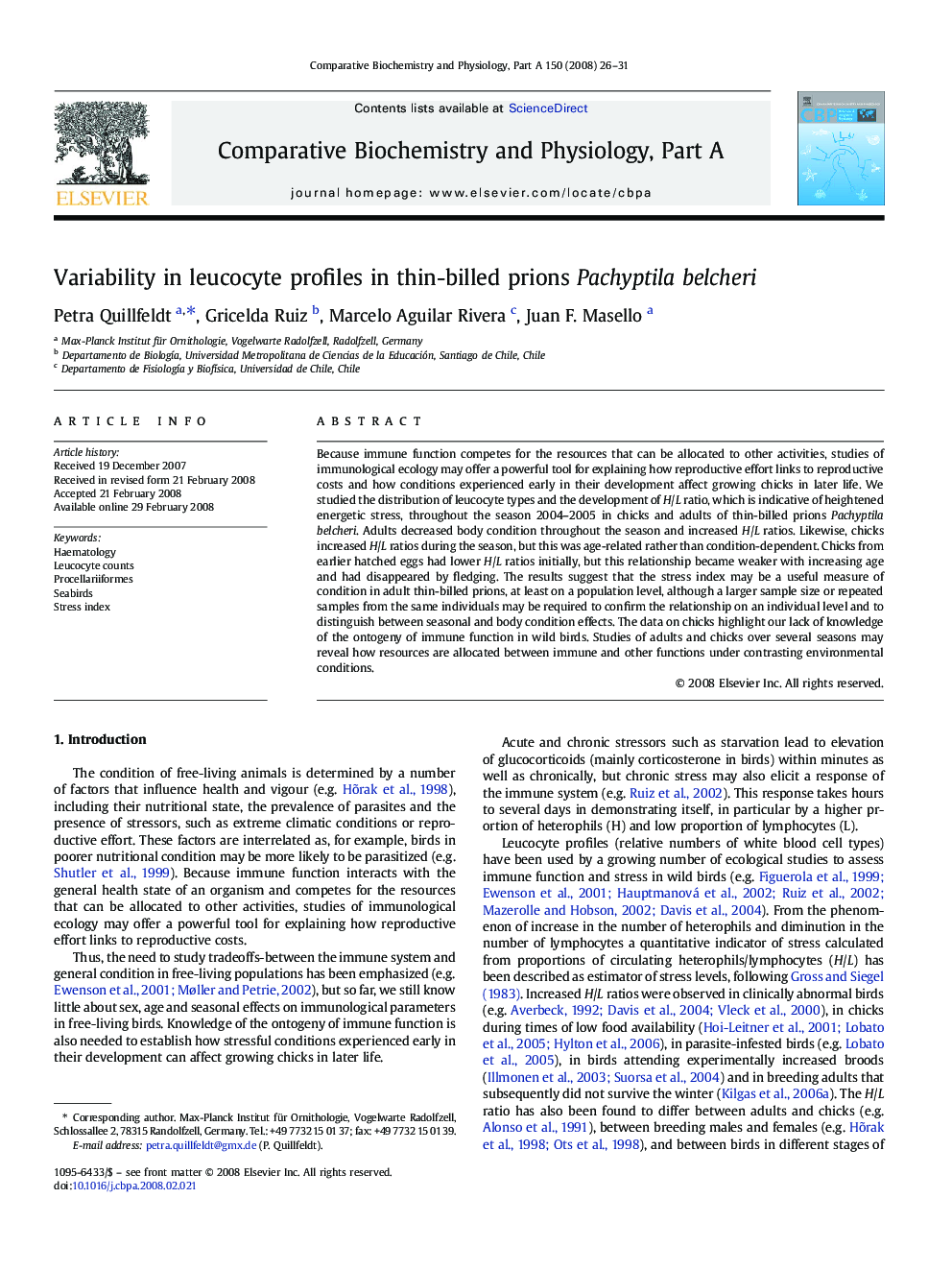| Article ID | Journal | Published Year | Pages | File Type |
|---|---|---|---|---|
| 1974726 | Comparative Biochemistry and Physiology Part A: Molecular & Integrative Physiology | 2008 | 6 Pages |
Because immune function competes for the resources that can be allocated to other activities, studies of immunological ecology may offer a powerful tool for explaining how reproductive effort links to reproductive costs and how conditions experienced early in their development affect growing chicks in later life. We studied the distribution of leucocyte types and the development of H/L ratio, which is indicative of heightened energetic stress, throughout the season 2004–2005 in chicks and adults of thin-billed prions Pachyptila belcheri. Adults decreased body condition throughout the season and increased H/L ratios. Likewise, chicks increased H/L ratios during the season, but this was age-related rather than condition-dependent. Chicks from earlier hatched eggs had lower H/L ratios initially, but this relationship became weaker with increasing age and had disappeared by fledging. The results suggest that the stress index may be a useful measure of condition in adult thin-billed prions, at least on a population level, although a larger sample size or repeated samples from the same individuals may be required to confirm the relationship on an individual level and to distinguish between seasonal and body condition effects. The data on chicks highlight our lack of knowledge of the ontogeny of immune function in wild birds. Studies of adults and chicks over several seasons may reveal how resources are allocated between immune and other functions under contrasting environmental conditions.
